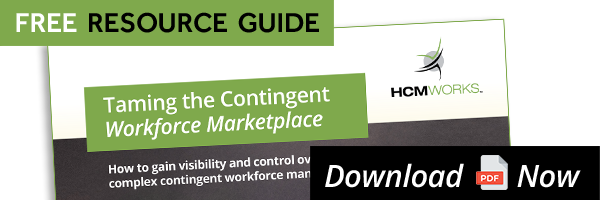With the complex nature of managing a contingent workforce and the various new methods involved in acquiring top talent, the task of recruiting and hiring candidates (whether permanent or non-permanent) is becoming more difficult.
That’s why metrics are so important. Constant analysis of your recruiting processes will allow your organization to understand what’s working, what isn’t and what can be done better - ensuring you procurement and HR teams meet workforce targets and see valuable return on investment (ROI).
Two popular metrics are time-to-fill and time-to-hire, but what exactly do these terms mean and why do they matter?
What is time-to-fill?
The definition of time-to-fill is straightforward. It is simply the number of calendar days taken between the time your organization firsts publicises a job vacancy to when an offer is accepted.
This metric allows you to see whether your job advertising is working, acts as a warning sign that you are not signing top talent fast enough and potentially losing out to your competitors, and prepares you for better talent acquisition in the future.
The success of your contingent workforce relies on being able to place valuable workers into your organization in a timely efficient manner, and time-to-fill will give you an idea of how your company - or your managed services provider (MSP) - is performing.
How do you calculate time-to-fill?
Time-to-fill is a simple calculation, which measures a specific time period. However, it’s important that your company defines that time period and uses it across all calculations if you want accurate results.
In general, the standard calculation is the day that a job vacancy is opened to the moment that the contract for the position has been accepted. The standard calculation is:
Time-to-fill = The total number of days that a specific job is available and unfilled.
To determine your company’s average time-to-fill, you need to gather this data for every job posting over a set time frame - one month, one quarter or annually.
You can calculate this by adding all time-to-fill measurements for each position your company filled in that given time period and then divide by the number of roles.
Average time-to-fill = The total number of days of open jobs divided by the total number of jobs open.
What is time-to-hire?
While many businesses mistake time-to-hire with time-to-fill, the metrics are not the same and will give your organization different insights into your hiring processes.
While time-to-fill measures the entire process from posting a job vacancy to filling the position, time-to-hire calculates how fast your company moves once you have made initial contact with the right candidate.
This is the time between the moment your eventual hire entered your pipeline to the moment they accepted your contract offer. Simply put, it’s the time your organization takes from spotting the best candidate to successfully offering them a job, whether permanent or temporary.
This metric will give your business visibility into how quickly your recruitment or contingent workforce program is delivering value to your company - the amount of days it takes your HR team, procurement team or MSP to fill your open job position.
How do you calculate time-to-hire?
To calculate time to hire, imagine that the day that you open a specific role is day 1. If your best candidate accepts your job offer on day 15 and they applied on day 10, your company’s time-to-hire is 15-10 = 5.
Time-to-hire = The day your candidate enters your talent pipeline to the day they accept an offer for the role.
What is the difference between time-to-fill and time-to-hire?
While both the time-to-fill and time-to-hire metrics may sound incredibly similar, separating the two will give your organization different insights into your recruitment and contingent workforce management program.
In summary, time-to-fill will tell you how fast your hiring process is, while time-to hire will show you how fast you were to identify the best candidate for a specific role.
Want to learn how a professional and highly-skilled MSP can transform your contingent workforce management program and help your company make better, more efficient hiring decisions? Contact HCMWorks today.



